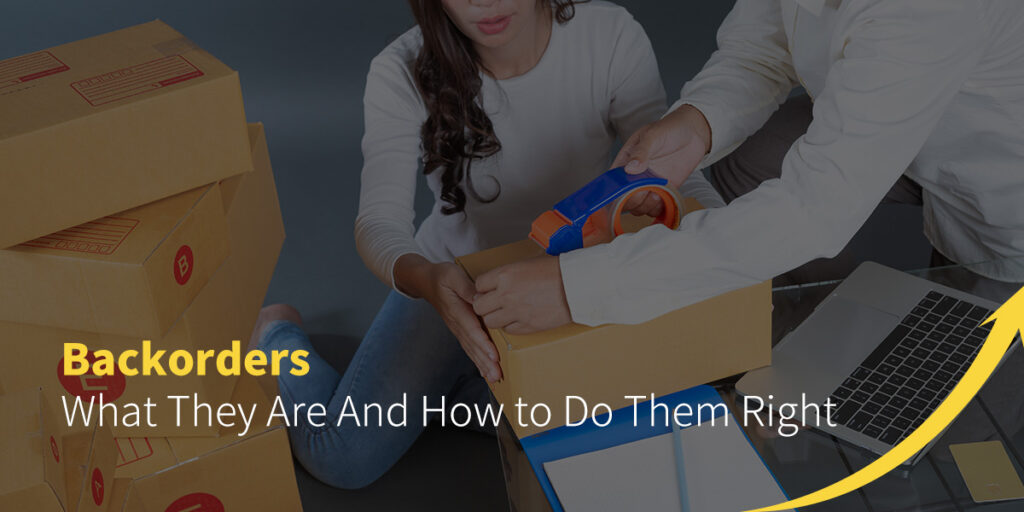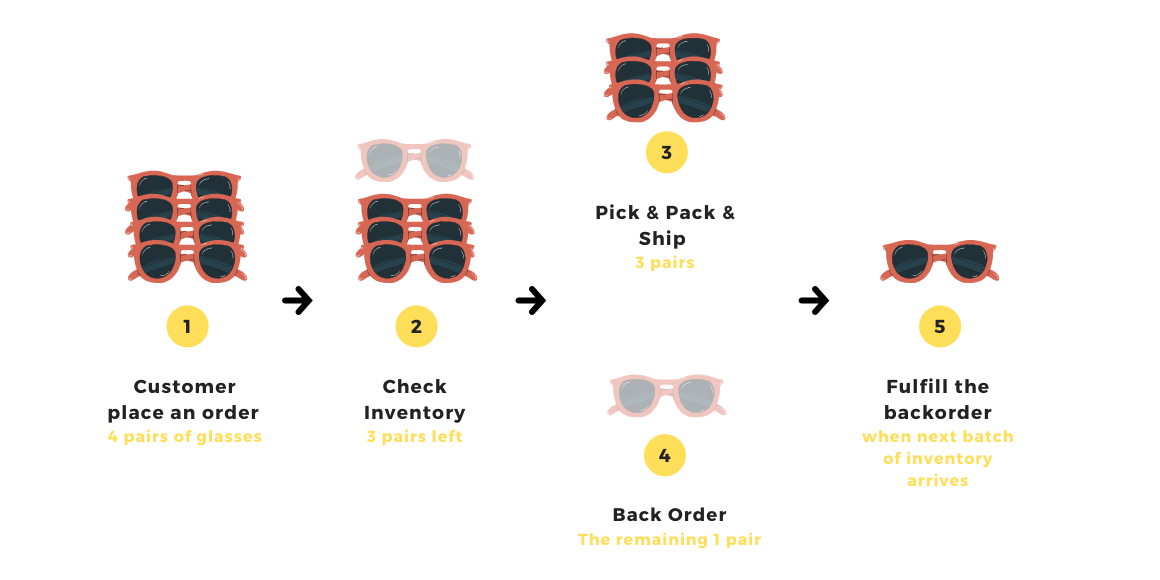Backorders are a critical part of the order fulfilment process that business owners often find confusing, so if you’re asking yourself “what does backorder mean?” you’re not alone, and the good news is you’re in the right place. In this post, you’ll learn what backorders are and why they are essential for your business.
Table of Contents
- What is a backorder?
- Benefits of running backorders
- Best practices for backorder management
- Conclusion

What is a backorder?
Backorders are requests for goods or services that can’t be met due to inadequate supply. In most cases, the items may have been depleted from the vendor’s available stock but remain in production. However, sometimes, it may be necessary to manufacture new items. Whenever a business registers back orders, it implies that the need for a particular product exceeds available supply.
The attributes of the item in demand and the quantity of backorders often determines how long customers must wait before they can have their orders filled.
To understand backorders, it may help to view them as a particular quantity of stock that a company’s customers have ordered but not received since it is unavailable. However, just because a company lacks inventory, it doesn’t mean it can’t operate. In fact, many vendors and retailers can successfully continue operations even when they lack sufficient stock on hand.
Backorders often necessitate specialized accounting. Companies typically inform customers that the product requested is out of stock, and they always provide an expected delivery time. The company then keeps the customer updated with any changes in the delivery schedule in case there are any problems to ensure the sales orders aren’t terminated. All the backorder sales are recorded in the company’s sales records as backorders rather than completed transactions.
The advantage here is that should the customer choose to terminate the order, the vendor’s bottom line remains unaffected, and there is no need to update the accounting system. The company places an order with its production facility to have the goods delivered. After the shipment arrives, the purchase order is retrieved and a delivery team dispatched. The sale is then recorded and marked as finished.

Benefits of running backorders
Keeping items on backorder helps increase demand, retain and grow the customer base, and it generates value for the product. They are also an essential part of your business organisation’s inventory management process. The number of items you have on backorder and the time it takes to get those orders filled can help you assess how well your company manages its inventory. A backorder with a short turnaround time (also known as a manageable backorder) would imply that the inventory management process is working smoothly. However, long wait times, combined with large backorders would mean that there are challenges with inventory management.
Backorders can be remarkably cost-effective. If you partner with a reliable supplier, running backorders will earn you significant savings from reduced carrying costs. You could, for instance, start by taking backorders on the items displayed on your e-commerce website. Once you’ve gathered a sufficient number to make the quota, you could place an order with your distributor. This strategy will allow you to offer a wide variety of products at no extra fee, since there’s no need to meet carrying costs. If you drop ship your backordered items, customers won’t even need to wait for their orders to reach you. Your supplier will fulfil them, further reducing the waiting time.
Think of all the kinds of items you sell. Imagine you are selling handmade exotic furniture. Furniture typically consists of large bulky items, so the holding costs are often huge. Instead of taking these costs on, you could inform customers that delivery times may vary for all products while retaining a small quantity of the most popular on hand for quick sales. There’s no need to tell the customers your business operates on backorders as long as you clearly state that the orders will take a while to reach them. Most clients are understanding, especially when dealing with large, expensive products.

Best practices for backorder management
Don’t process payments right away. Often it is in both parties’ interest to avoid refunds. By waiting to process payment, you address the possibility that your manufacturer or distributor could fail to deliver the order or take more time than expected. This will help you keep customers happy and avoid inconvenient refunds.
Update your website frequently. For highly popular products, it would be wise to add the in-stock date to your website to inform your customers on expected delivery dates. In some situations, offering a specific time instead of saying an item has been backordered will build customer confidence and encourage future orders. Customers appreciate it whenever you explain what you’re doing to rectify a supply chain failure. For popular shopping seasons, you could also share the information on your company’s social media pages.
Backorders mean increased sales but troubled clients. After all, you are asking them to pay for a product that you do not currently have, so they will be anxious. Your customers will want constant updates, and they are particularly unforgiving whenever you don’t communicate. Consequently, it is a good idea to send emails, apologies, and new estimated times of arrival whenever your suppliers and distributors run into delays.
Consider offering a consolation. If you’re worried about losing customers, make their wait worth it. Offer a discount for the item or for future orders. Free gift packaging and shipping may convince them to wait until your product is available.
Engage your audience. Whether you talk with your customers via email or chat, the sincerity of a personal answer will appease even the most uneasy buyers. Ensure your contact details are clearly displayed on all your online channels and emphasize how much you value customer satisfaction. If you run a specialized team, inform them of the likelihood of increased customer contact arising from the backordered item.
Review your inventory management system. If you have backordered items too often, it may be necessary to evaluate your ordering and inventory stocking procedures. You should also assess historical sales data. It may reveal repetitive trends that will help you decide when to replenish stock.
Assess the timeframe for the backordered items. Your wholesaler or distributors may send you stock in less than a week. If that turns out to be the case, you need not tell your customers about a delay.
Conclusion
With the right approach, backorders can be beneficial for your business. As long as you stay organized and maintain effective communication with your supply partners and customers, the strategy will help you reduce operational costs, understand consumer behavior and increase the perceived value of your product.
